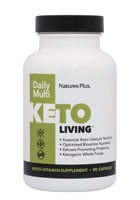Beginning a diet can be downright exhilarating: The numbers on the scale drop, your energy soars, your clothes fit better, even your skin clears.
But then it happens—your weight plateaus (or even rises) and that surefire motivation you had starts to sag. You’ve done everything right, so why the standstill?
While the reasons for diet plateaus are often varied—from consuming more calories than you think to not getting as much as exercise as you might need—there is hope (and then some). Here are four fresh ways to kick-start your weight loss so that you can feel as driven by the endeavor as you were at the start.
1. Get strategic about your workouts
Most dieters work under the dictum that calories in/calories out is the most expedient way to shed pounds. To that end, you, too, may have devoted the majority of your gym sessions to cranking out miles on the treadmill, your eyes closely following the number of calories burned.
Admirable? Certainly. But relying on cardio alone may keep you from reaching your weight loss—and health—goals.
The reason is this: Muscle burns more calories than fat tissue, meaning that building muscle through strength training is just as vital as cardio—and the key to boosting your resting metabolism.
But one needn’t be at the exclusion of the other; indeed, a combination of strength training and cardio is ideal for weight loss and general fitness. A few combos to try: swimming and kettlebells, running andweight lifting, and Barre—a form of exercise that combines heart-pumping cardio and ballet movements with light free weights and resistance bands.
2. Count more than calories
You may be eating a reduced number of calories, but there’s a vast difference between consuming calories from rice cakes and getting dense, essential nutrients from, say, two hard boiled eggs. To phrase it differently, breaking through your weight loss plateau requires counting more than calories; carbs should be tracked too.
Why? As registered dietician (and nutritional consultant to the New York Rangers) Cynthia Sass puts it, “Your body has a huge capacity to store carbohydrates. You can sock away at least 500 grams. To put that in perspective, one slice of bread packs 15 grams. When you eat more carbohydrates than your body immediately needs, you store the leftovers in your carb piggy bank, known as glycogen.” But some carbohydrates can be converted to triglycerides or fat. And depending on your genetics you may do this with more ease than other people.
To add insult to injury, you stockpile an additional 3 to 4 grams of water for every gram of glycogen that’s amassed, which can convert to a higher number on the scale. Aim to cut down—or banish altogether—carbohydrates such as white bread and pasta, and eat “good” carbs (fruits, vegetables, quinoa) in moderation.
3. Pay a visit to your doctor
Going keto or trying out The Whole30 doesn’t seem to necessitate a visit to your doctor. But stalled weight loss, when you’ve devoted yourself to a solid eating and exercising routine, might be indicative of something more going on.
For starters, have your thyroid checked. Not getting those pounds to budge may have less to do with your willpower and more to do with the butterfly-shaped gland that rests in your neck. Hypothyroidism—a condition that affects roughly 5 percent of Americans—is characterized by not producing adequate thyroid hormones, and it can result in everything from constipation and a puffy face to difficulty losing weight. A comprehensive test will allow you and your doctor to see how well your thyroid is functioning (and make necessary adjustments).
Next up? Have your doctor check your inflammatory markers. Inflammation is a natural bodily process that can work for you—in terms of healing a wound, for example—and against you (think here of an allergic reaction). Habits such as eating sugary foods and leading a sedentary lifestyle can result in what’s known as “chronic inflammation,” long-term inflammation in which the immune system is persistently “on.” The consequences of this are widespread, including weight gain or trouble dropping pounds.
You should also have your cortisol levels checked. Frequently dubbed “the stress hormone” (although I like to think of it as our “energizing hormone”), high cortisol is notoriously linked to weight gain (or challenges in getting that scale to shift). Much of this is due to stress: As tension rises, so does cortisol, which can trigger your appetite. (Who hasn’t downed a bag of chips while under duress?) Or, as WebMD says, “Because increased levels of the hormone also help cause higher insulin levels, your blood sugar drops and you crave sugary, fatty foods.” Knowing where your levels stand is a step closer to your weight loss goals—while learning how to manage stress ought to be a life goal.
4. Know that no diet is one-size-fits-all
Your best friend may have lost her baby weight by following a raw, vegan diet, while your cousin may have scored a sculpted figure after going with Paleo. But what worked for them might not necessarily work for you. You may feel better—and still see terrific results—by eating a high-fat, low-carb diet, or you may find that your body responds best to a pescatarian plan that incorporates barley and Greek yogurt. In other words, experiment, experiment, experiment (just make sure you’re getting lots of leafy greens and vegetables and eschewing sugar—which isn’t good for anyone). With time, you’re bound to discover not just a “diet” but a lifestyle that works for you—now, and always.




